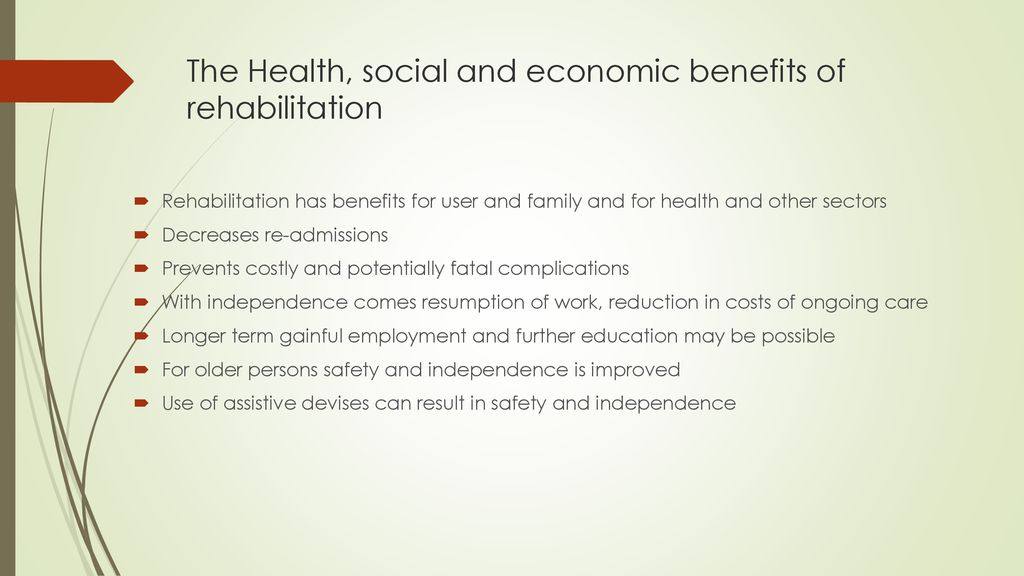The Best Guide To Narconon Africa
The Best Guide To Narconon Africa
Blog Article
The 6-Minute Rule for Narconon Africa
Table of ContentsNot known Incorrect Statements About Narconon Africa Examine This Report about Narconon AfricaThe Basic Principles Of Narconon Africa The 7-Second Trick For Narconon AfricaNarconon Africa Things To Know Before You Get ThisSome Known Details About Narconon Africa All about Narconon Africa
In a collection of documents with Manudeep Bhuller and Katrine V. Lken, we get over these data difficulties and the nonrandomness of jail time, providing new insights into how imprisonment impacts relapse, employment, youngsters, and criminal networks - Drug addiction help. Figure 1 Our work studies the effects of imprisonment in Norway, a setting with two key advantagesWe can additionally connect this information to various other relative, including children and brother or sisters. We have information on co-offending that allows us to map out criminal networks for observed criminal activities. Second, we can take advantage of the random task of criminal cases to courts who differ in their tendencies to send out offenders to prison.
However some courts send out accuseds to prison at a high rate, while others are a lot more forgiving. We determine a court's stringency as the average imprisonment rate for all various other situations a judge deals with, after controlling for court and year set results, which is the level of random task. This quasi-random job of court stringency can be used as a tool for imprisonment, as it highly forecasts the court's decision in the present situation, but is uncorrelated with other instance attributes both deliberately and empirically.
6 Simple Techniques For Narconon Africa
Attributes of detainees, including demographics and criminal activity classifications, are generally similar in Norway and other nations, consisting of the United States, with the exemptions that the US homicide price is a lot greater, and race plays a bigger function there. What stands apart as different, specifically contrasted with the USA, is the jail system.
Figure 2In Norway, the typical time invested behind bars is a little over 6 months, which is comparable to most various other Western European countries. This contrasts with average US jail time of practically three years, which remains in big part the factor the USA is an outlier in its incarceration price compared to the remainder of the world [Figure 1]
9 Easy Facts About Narconon Africa Shown
This supplies a lot more separation in between small and solidified offenders than exists in the United States. There is no overcrowding in Norwegian jails and far better personal safety, with each detainee being assigned to their own cell and a higher inmate-to-staff ratio than in the United States (https://www.provenexpert.com/narconon-africa/). Jails in Norway also supply well-funded education, drug treatment, psychological health and wellness, and task training programs
Our research on the impacts of imprisonment on the wrongdoer, utilizing the arbitrary task of judges as an instrument, yields 3 key findings. Jail time prevents even more criminal behavior. We discover that incarceration decreases the possibility that an individual will reoffend within 5 years by 27 percentage points and minimizes the corresponding number of criminal charges per individual by 10 costs.
Narconon Africa - Truths
We find large reductions in reoffending probabilities and cumulative billed criminal activities also after accuseds are released from prison. Our second outcome is that predisposition due to choice on unobservable individual features, if overlooked, causes the incorrect conclusion that time invested behind bars is criminogenic. If we simply contrast criminal defendants imprisoned versus those not sentenced, we discover favorable organizations between incarceration and subsequent criminal activity.
This stands in comparison to our evaluation based on the arbitrary assignment of courts, which locates an opposite-signed outcome. Third, the decrease in criminal activity is driven by people that were not working before imprisonment. Amongst these people, jail time enhances participation in programs guided at enhancing employability and reducing recidivism, and this ultimately raises employment and profits while discouraging criminal actions.

Jail time creates a 34 percent factor increase in participation in task training programs for the previously nonemployed, and within five years their work price rises by 40 percent factors. At the exact same time, the chance of reoffending within five years is cut by 46 percent points, and there is a decline of 22 in the ordinary number of criminal charges.
Narconon Africa Fundamentals Explained

A probable explanation for the distinction is that Norway's jail system varies significantly, both in terms of prison-term length and jail problems, from the United States jail system. While recognizing the impacts of incarceration on the culprit is a vital primary step, Substance abuse recovery recording spillover results is also crucial for evaluating criminal justice policy and creating efficient jail systems.
An Unbiased View of Narconon Africa

Ordinary the very least squares estimates reveal that kids of incarcerated daddies are 1 percent factor more probable to be charged with a crime, loved one to a mean of 13 percent, and show no impact on institution grades. Using our court stringency instrument, we discover no analytical proof that a dad's incarceration influences a child's very own criminal activity or college qualities, yet we are not able to dismiss modest-sized results.
Rumored Buzz on Narconon Africa
We specify criminal groups based upon network web links to prior criminal instances. Our evaluation returns 3 major findings. When a criminal network participant is put behind bars, their peers' chance of being billed with a future criminal activity reduces by 51 percentage factors over the next 4 years. Likewise, having an older brother put behind bars decreases the possibility his more youthful brother will certainly be billed with a crime by 32 percent points over the following four years.
Report this page